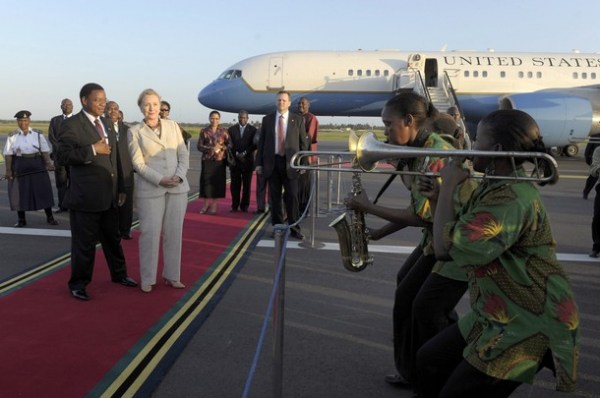Michael Paul
JF-Expert Member
- Nov 2, 2010
- 403
- 319

However, the governments of the developed world have acknowledged a need to invest anew in global agricultural development, but have been slow to fulfill the
$22 billion of pledges they made on this issue in 2009 in L'Aquila, Italy. Numerous advocacy groups are attempting to track the status of the pledges. The latest accounting on this issue by the Group of 8 governments themselves was made public a few weeks ago in a document called the Deauville Accountability Report.
However, the watchdog groups have attacked that document, saying that it obfuscates the slow pace of spending by the governments. A group called ActionAid has published a detailed analysis, coming to the conclusion that, two years into a three-year set of pledges, the governments have actually spent only 22 per cent of the pledged amount. Oxfam also discusses the status of the pledges in one section of a broader report.
The role of the US in ramping up agricultural development is a major issue. The original Green Revolution succeeded in part because the US spent large sums of money helping India, Pakistan and other countries intensify their agriculture. This occurred in the context of the cold war, when the philosophy in Washington was that one way to win the loyalty of nonaligned countries was through the stomachs of their citizens.
The Obama administration is making the single most ambitious pledge at L'Aquila - $3.5 billion in aid for poor countries over three years - with Secretary of State Hillary Clinton especially visible on the issue.
But in tight budget times, the administration has faced a tough battle on Capitol Hill in seeking to make good on its pledge. In two budget cycles, it has won $1.9 billion, so Congress would have to increase spending on the Feed the Future programme and related projects substantially in the coming year to meet the pledge.
Meanwhile Africa holds the single largest concentration of food insecurity in the world. Agricultural productivity is low and many farmers, often women, do not grow enough to sell their surplus and better their situation. Discussions in the West about the future of African agriculture often devolve into heated ideological battles, like organic vs. conventional production.
Fortunately, Africans have been devising their own plans and making clear to the outside world what kind of help they do, and don't, need. Africa's overall strategy is the Comprehensive Africa Agricultural Development Programme, and that Web site includes a rich trove of documents.
Additionally, the World Bank is the trustee for the Global Agriculture and Food Security Programme, a fund set up as part of the L'Aquila pledges to finance agricultural development in poor countries.
The problem with the World Bank fund is, once again, that rich countries have been slow to honor their pledges to contribute. So while a dozen countries have been funded, 13 more are waiting in the wings for money that hasn't arrived.
A major issue is the future role of the publicly funded international research institutes that work on major crops like wheat, rice and corn. This network is formally known as the Consultative Group on International Agricultural Research, but people in agriculture call it "the CG system." It is essentially the institutional legacy of the Green Revolution, with Norman E. Borlaug's old institute in Mexico being one of the major centers.
After years of budget cuts, the CG system hit bottom in the mid-2000s, and only recently, with rising global concern about the food supply, have budgets started to recover. But agronomists I interviewed told me they remain grossly inadequate for the necessary tasks of developing improved crop varieties and techniques.
The CG system has been undergoing a reform process to eliminate duplicative work among its 15 centers, and supposedly, new money from donors is eventually going to be forthcoming. "We have not seen the money," Robert Zeigler, director general of the International Rice Research Institute, told me in an interview. I am not aware of any advocacy group that is tracking the C.G. reform and the general performance of the C.G. system; if any reader is, please send me a link.
I do know some intriguing projects have been initiated recently in some of the centres. For instance, they have been collecting thousands of seed varieties from peasant farmers for decades, but without much ability to figure out what kind of genetic variability was actually available within those plants. Now the genetic tools are becoming available at the International Maize and Wheat Improvement Centre.
The goal of such projects is to find great genetic potential in the old varieties and move those genes into modern, high-yielding plants. I suspect that mining our gene banks this way is going to be a major strategy in the future.
But there's the question of what kind of scientific research (beyond crop development) we need to ensure the future of the global food supply. The concern among these scientists is that we may be walking blindly toward a perilous future.